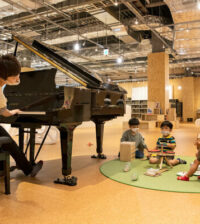- Belgium comes to Yamashita Park
- Residential Villa in Phuket Entices Remote Workers With Long-Stay Rates
- Rare pieces of French glass art at the Mirai Museum of Art
- Feast on fresh fish and seafood at the 2024 ‘Sakana’ Festival
- Would you like to ride in a Louis Vuitton gondola lift?
- Naked Snow Aquarium
- Festive lights at Yomiuriland will get you feeling the holiday vibes
Back to basics
Scented candles, essential oils, effervescent salts. There’s perhaps no other experience as soul-transporting as a warm bath short of one causing bodily harm. While Enya and Lush have done much to popularize the Western bath experience as an individual act of self-pampering, Japan’s version offers a unique comparison.
For centuries, the Japanse have refined bathing to an almost spiritual art form. The symbolic acts of washing your hands and rinsing your mouth before entering a Shinto temple are leftover rites from a time when you might stand under a cold mountain stream for hours before reciting a day’s worth of sutras.
These days, washing and bathing are really two types of activities with washing being just a polite build-up to sharing someone else’s bath water. Since nudity and sexuality aren’t as closely linked as they are in the West, communal bathing is both an important and accepted part of Japanese culture and family life. Bathing with friends, family and coworkers is simply another way to say, “I’m so comfortable with you, I really don’t mind sitting next to you naked, prune-like and vulnerable.”
It’s perhaps for this reason that you’ll see entire families habitually trek out to “super” sento, large public bathhouses with segregated baths where the kids get their ears scrubbed while “obaachan” (grandma) gets her back pummeled by shiatsu water jets. The amount of noise and activity in these family-style bathhouses is probably the same as what you might find in a high school locker room.
Only when you’ve thoroughly scrubbed under the communal showers and tied your loose hair into a knot, should you actually enter the bath. There are the shiatsu massage baths, mineral baths, and baths of varying temperatures. In the larger sentos and spas, there is always a rotenburo or outdoor bath complete with rocks, foliage, and a split bamboo tube with a relaxing sound effect of constantly dripping water. There are often smaller, eggshell-shaped kettle baths or baths shaped like buckets indended for girlfriends who need a little privacy to complain about their boyfriends.
For a break, you can sit in the sauna which is usually cedar-paneled and built like an auditorium before a large television screen showing variety programming or a soap opera. You’ll also see women pouring buckets of cold water over themselves between soaks as a way to lower the body temperature without washing away the beneficial effects of a mineral bath. Another way to absorb its properties seems to be splashing handfuls of the water onto your face before massaging the skin around your eyes and cheeks.
As for the differences between an onsen or spa or sento, it’s largely a question of the water source. You’ll find mineral baths at all of them but onsens are natural hot springs and both onsens and spas will claim to have their water pumped from a natural source. A sento is a public bath which may or may not have natural spring water. A spa generally refers to a building or complex whose primary purpose is bathing and relaxation but most onsens are attached to a hotel or ryokan.
While regular sentos are louder and definitely cheaper, they still offer a similar bathing experience to what you might find at a novelty spa like the ones at Atami, in Odaiba and Enoshima. Enoshima offers more by way of decor, featuring cavernous mixed-sex baths (swimsuits required) with a view of Mount Fuji. The outskirts of Tokyo also offer a wide range of theme spas. To date, I’ve visited one with a jungle theme, a live bear theme, and one whose baths were decorated with clay figurines of Disney’s Seven Dwarfs.
LaQua near the Tokyo Dome is one of the most well known inner-city spas. The spa’s natural saltwater springs come bubbling up 1,700 meters underground and contain minerals said to be good for your skin, arthritis, and muscle fatigue. LaQua has a variety of pools and baths to instill a sense of deliberate relaxation even in Tokyo’s chaotic urban midst.
As the international spa boom continues with new upscale deluxe sanctuaries sprouting up in Japan, put aside this complex world of aromatherapy suites, skin peels, vibrating gongs and seaweed vats and go back to basics.
Try Japanese bathing culture this rainy season. You won’t regret it!












